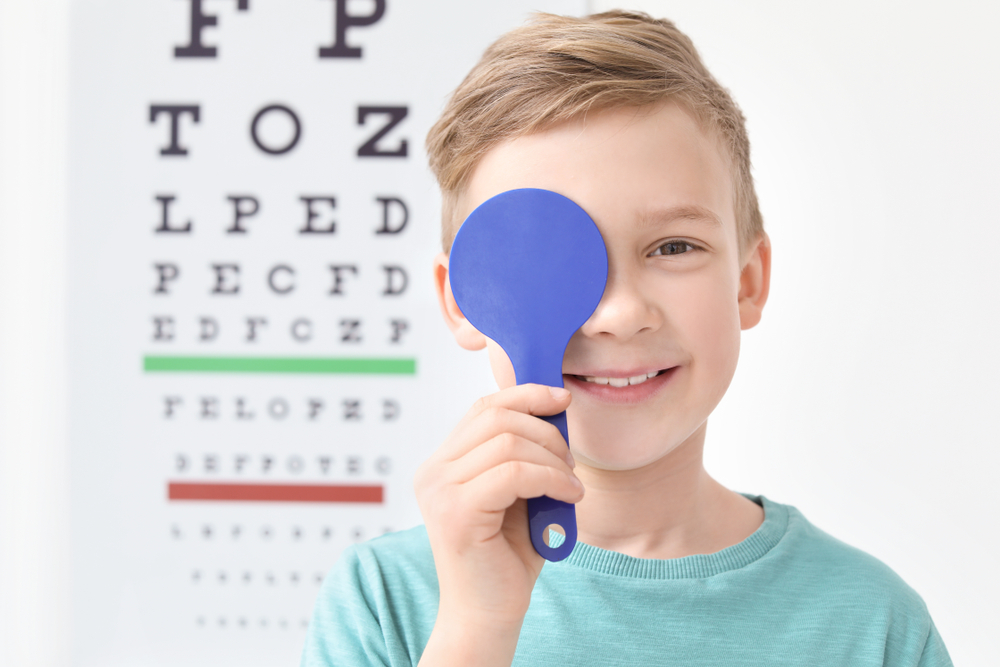
The health of our eyes is a crucial aspect that we need to consider from an early age. The eyes are not just the windows to the world; they are also a vital part of our overall health and well-being. For children, especially those of school-going age, the importance of maintaining good eye health cannot be overstated.
Eye health in children is about more than just ensuring they have good vision. It is also about preventing conditions that can lead to vision loss and detecting vision problems early. It's about understanding the unique needs of a child's eyes, the common vision problems they may face, and the steps parents and caregivers can take to promote eye-healthy habits.
Importance of Vision Screening for School-Aged Children
Vision screening is an essential part of preventative healthcare for children. It's a simple, non-invasive process that can detect vision problems early, allowing for timely treatment and preventing further damage. The American Academy of Ophthalmology recommends that all children have their vision screened at least once between the ages of 3 and 5.
Vision problems can significantly affect a child's academic performance and social development. For instance, a child who can't see the board clearly may struggle to keep up with lessons, while a child who has difficulty focusing may have trouble making friends. Regular vision screenings can help detect these problems early and ensure that your child gets the help they need.
Many parents and caregivers overlook the importance of regular vision screenings, assuming that their child's eyes are healthy because they don't complain of any problems. However, children may not always be able to articulate what they're experiencing, and some vision problems may not present obvious symptoms. This is why regular eye exams are so crucial.
Understanding Your Child's Eyes: Common Vision Problems in Children
Children's eyes are constantly changing and developing. As such, they are susceptible to a range of vision problems. Some of the most common include refractive errors (like nearsightedness, farsightedness, and astigmatism), strabismus (crossed eyes), amblyopia (lazy eye), and color blindness.
Refractive errors are the most common vision problems in children. They occur when the eye doesn't bend light correctly, resulting in blurred vision. Regular vision screenings can help detect these errors early, and glasses or contact lenses can usually correct them.
Strabismus and amblyopia are more serious conditions that can lead to permanent vision loss if not treated early. In strabismus, the eyes don't align properly, while in amblyopia, one eye is weaker than the other. Both conditions can be treated with glasses, patching, or in some cases, surgery.
Color blindness, while not as serious as the other conditions, can still impact a child's learning and development. It's a genetic condition that impairs the ability to distinguish certain colors.
How to Promote Eye-Healthy Habits in Children
Promoting eye-healthy habits in children is a shared responsibility between parents, caregivers, and educators. The first step is to ensure regular vision screenings. As we've discussed, these screenings can detect vision problems early and ensure timely treatment.
Another important habit is to encourage children to rest their eyes regularly, especially if they spend a lot of time reading or using screens. The 20-20-20 rule is a good practice: every 20 minutes, take a 20-second break and look at something 20 feet away. This can help reduce eye strain and promote overall eye health.
Teaching children about eye safety is also crucial. This includes wearing protective eyewear when playing sports or engaging in activities that could potentially harm the eyes and avoiding direct sunlight exposure by wearing sunglasses with UV protection.
Good hygiene is essential for maintaining eye health. Teach your child not to rub their eyes, as this can introduce bacteria and other harmful particles. Also, if your child wears glasses or contact lenses, ensure they know how to clean and handle them properly to prevent infections.
Lastly, a good night's sleep is important for eye health. Sleep allows the eyes to rest, heal, and replenish essential nutrients. So, make sure your child is getting adequate sleep each night.
The Role of Nutrition in Your Child's Eye Health
Nutrition plays a significant role in maintaining your child's eye health. Certain nutrients, such as vitamins A, C, and E, omega-3 fatty acids, and zinc, are particularly beneficial for eye health.
Vitamin A, found in foods like carrots, sweet potatoes, and spinach, is crucial for maintaining the surface of the eye and preventing conditions like dry eye and night blindness. Vitamin C, found in fruits like oranges and strawberries, can help prevent cataracts and age-related macular degeneration.
Omega-3 fatty acids, found in fish like salmon and tuna, are essential for visual development and retinal function. Zinc, found in meats and poultry, helps the body absorb vitamin A and reduces the risk of age-related macular degeneration.
Encouraging a balanced diet rich in these nutrients can help maintain your child's eye health and prevent vision problems.
Prioritizing Your Child's Eye Health
Prioritizing your child's eye health involves regular vision screenings, promoting eye-healthy habits, protecting their eyes in the digital age, and ensuring they get the right nutrients. While it may seem daunting, these steps can go a long way in ensuring your child's eyes are healthy and that they can see the world clearly.
Early detection and intervention are key to preventing and treating most eye conditions. So, make eye health a priority, and help your child develop habits that will protect their eyes for a lifetime.
For more information on eye-healthy habits for school-aged children, contact Smoot Eye Care at our office in Bedford, Indiana. Call (812) 675-4199 to schedule an appointment today.









